Article
The Long Road to Nigeria’s Industrialisation; The Need for Critical Interrogations

The state, the government and its bureaucracy are subjects of diverse discourse in terms of ideological underpinning, policy formations and implementation, politics and the competition between equally diverse status groups for control and domination of political power and access to the commanding height of the national economy. js">
Industrialization is a manifest concept by the bourgeoisies’ capitalist emergent status groups in Europe at the beginning of the industrial revolution. There existed an intrinsic nexus between; capitalism, industrialization and technological innovation. In Africa, the reverse has been the case as the political and economic elite’ comprador bourgeoisies’ lack the discipline of Calvinist Ethics and visionary leadership required to translate concepts into concrete realities for development.
It is against this backdrop that we can properly understand the causes of underdevelopment on the continent of Africa and its concomitant highest proportion of poverty especially in Nigeria the purported giant of Africa. All the past and present superlative development plans since independence are mare theoretical exercise in futility as the state actors and bureaucrats high up in various MDGs are adept at killing or sabotaging the plans before it grows into fruition.
It is at this point of departure that we can begin to interrogate the Why and How the industrial and agricultural revolution envisaged in successive national plans fizzled out into thin air. A recent seminar/ workshop organized by National Automotive Design and Development Council speaks volume to another effort in futility towards industrialization just like many before it. The theme of the seminar workshop focuses on the impact of automotive industry on the economic growth of Nigeria; lessons from China, India and Southeast Asia.
Do the countries on the the African continent and their political elite ever learn lessons? I am compelled to ask this question begging for answer since ever. We are always learning and even very good at it , but hardly put the knowledge into positive use in our countries for change and transformation. We are just too good at the blame game as we trade blames from one successive government to another. As we upgrade from the blame game to outright killing of one another in the name of ethno religious sentiments cloak in politics of identity.
The curses placed on Africans that blind the people from the path that leads to knowledge economy and the prudent management of its resource economy had ever trapped the continent in development deficit. As I continue in search of answers to my questions through critical interrogations, I ask once again: with respect to the focus of the seminar refers to above and other development conversations ever on the front burner of national discourse, where is Africa and her nations among the league of industrialized nations? Why is it that individual Africans and Nigerians specifically in the Diaspora excel in terms of global competence and achievements, but as a people, nations and continent we are backward, underdeveloped and today the world headquarters of global poverty, sickness and miseries?
The reference to Nigeria being cursed as popularly believed by the common man seems more of superstitious belief as there seems no empirical reasons to explain why citizens of a vastly resource rich country like Nigeria should be wallowing in poverty due to low GDP, unemployment, poverty and deplorable infrastructure deficits. The reasons mostly and often given by critics and public affairs analysts are replete with wide scale corruption in government’s MDGs and among state actors. Corruption in public offices percolates into private offices through bribery in time of contract awards and procurements. Corruption was the keyword in the coup speech that sacked the First republic government in Nigeria. It was a mere 10% back then compare to its geometric leap and bound through successive governments in Nigeria.
Each time the military junta used this keyword to justify why The Saviour on the Horse back must be given legitimacy by the civilians they extent the frontiers of corruption to an all time high proportion. This is evidence in the profligacy of public monies on White Elephant such as the many abandoned steel mills and complex, refineries, petro chemical industries, automobile assemblies and many other basic requisites manufacturing industries that were a initial shot at industrialization. Those in authority recklessly abandoned all these across the country without remorse over the time. Return to civil rule which allowed civilians to practice democracy neither offered any panacea nor assurance of correction of the junta misadventure into politics.
Rather, when Nigeria returned to democracy, public corporations and industries were hurriedly privatized and sold to companies without technical competence but had politician agents on ground to vouch for it. This shenanigan alliance made a bad situation worse. The realities on ground today are due to the action and inaction of past state actors. Nigerians blaze the trail across the world but back home, there are disunited by primordial sentiments, mutual suspicions with strong ethno religious underpinnings and corruption. Today, the mistakes of the past continues to hunt the present as the government and state actors keep doing things in the same old ways and expecting change.
Nigeria and her citizens are global laughing stocks around the world in recent times and until now as the live witness to the dehumanizing condition of Nigerians on a desperate journey across the Mediterranean and the desert. A survey conducted by the US -based research firm Pew Research Centre revealed that ; “ in Nigeria, Africa most populated nation, nearly half ( 45% ) of adults say they plan to move to another country within five years, by far the highest share among twelve countries surveyed across four countries in Africa. Those who dare to stay back amidst equally dehumanizing high level of killings, crime and terrorism are trapped in poverty while politicians and state actors subject them to their drama of the absurd. Agitations are rife before and after what happened in February 2019 called elections that we still hear echoes of gunshots and the sorrowful cries of the bereaved. The one Nigeria slogan to some of these people remains the biggest clog in the wheel of progress leading to industrialization.
Many others within the camp of the discontents advocate restructuring even if the entity must remain as one after more than a century, that tinkering with the present political structure would not be a bad idea for a revolutionary change. They strongly believed that it is time for a clear departure from the norm to break even with the past. If we cast our minds back to the recent electioneering campaigns in the build up to the general elections, the upstart political parties and its candidate outperformed the mainstream old parties and its equally tired and analog candidates
. To get out of this neck of dead wood, the Not Too Young to Run who are emasculated or compromised should used the next three years to re strategize for 2023 as the world is already leaving Nigerian youths behind in terms of national leadership positions in the 21st century. If the youth of every nation provides the active productive energy and action to preserve it, then the onus is on them to rescue Nigeria from the looming disintegration, anarchy and war as Nigerians Live Matter even when the government fails in its own part of the Social Contract.
My trajectory and position in this piece echoes United States Counsel General’s admonition to Nigerian youths recently at the three day Young African Leaders Initiative Techcamp Reconnect Workshop in Lagos state. He told the young Nigerians that the real solution to Africa’s problems could best be developed by Africans. He further noted that, finding sustainable solutions to these identified problems have been hampered by corruption, absence or misallocation of resources and gross mismanagement.
Hence, the onus incumbent on the youths is to think out of the box on how best to expand their space in the political arena. A herculean task it seems, but every generation must brace up to the challenges of its time. The challenges before the Nigerian youths today is enormous, but the first and most important step is to articulate altruistic agenda and present to the people holistic pragmatic alternative solutions to address the pressing issues facing the Nigerian state and the government.
Author Profile
-
Comrade Alex Ameh Ogbu is an Abuja based Media Practitioner and a prolific writer that writes mostly from Akatekwe Kingdom.
He is also the National Convenor Generation for Change Africa Initiative GFCAI. He can be reached via: onwaters2011@gmail.com
Latest entries
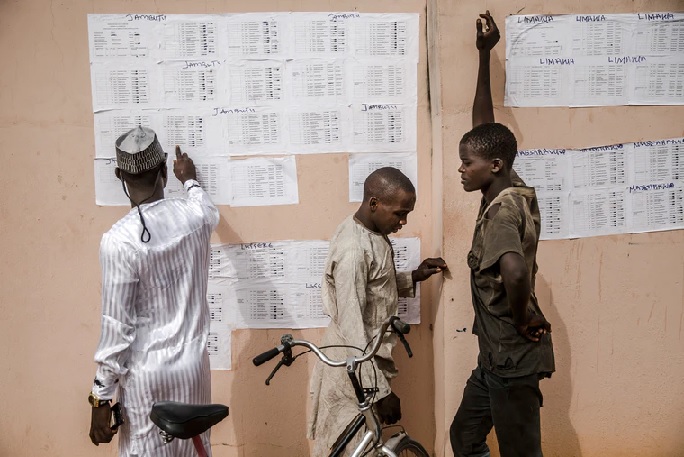 ArticleOctober 2, 2019The Travesty of Democracy through Sham Elections in a Rogue State: A Ride towards Anomie
ArticleOctober 2, 2019The Travesty of Democracy through Sham Elections in a Rogue State: A Ride towards Anomie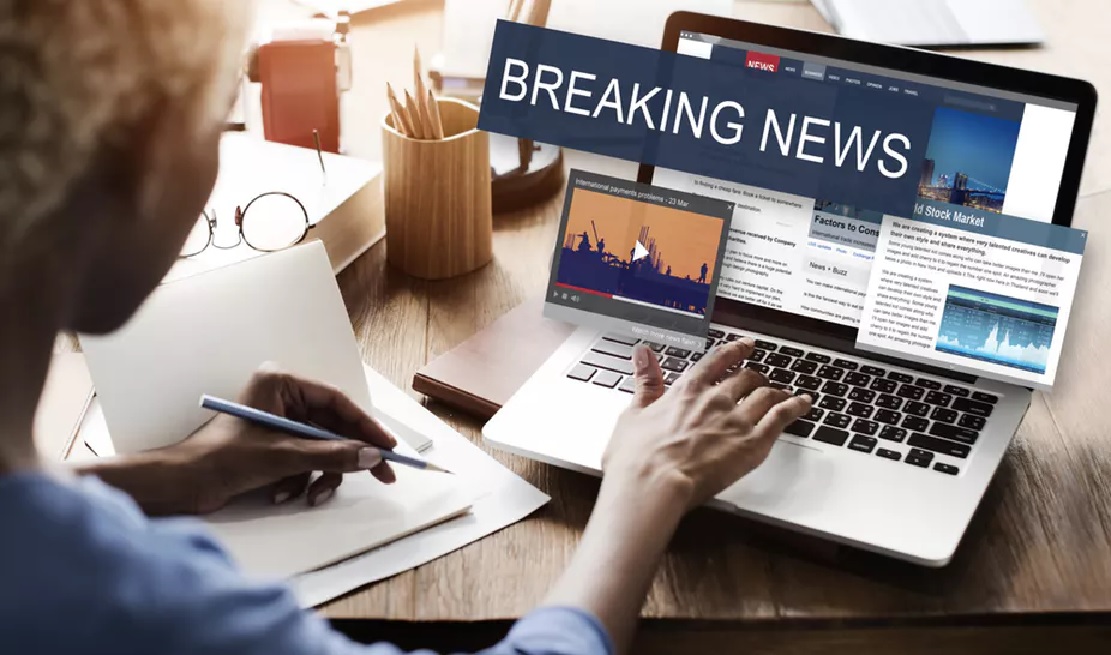 ArticleAugust 7, 2019The Press Cannot Be The Watchdog Of Society Without Vibrant Investigative Journalism
ArticleAugust 7, 2019The Press Cannot Be The Watchdog Of Society Without Vibrant Investigative Journalism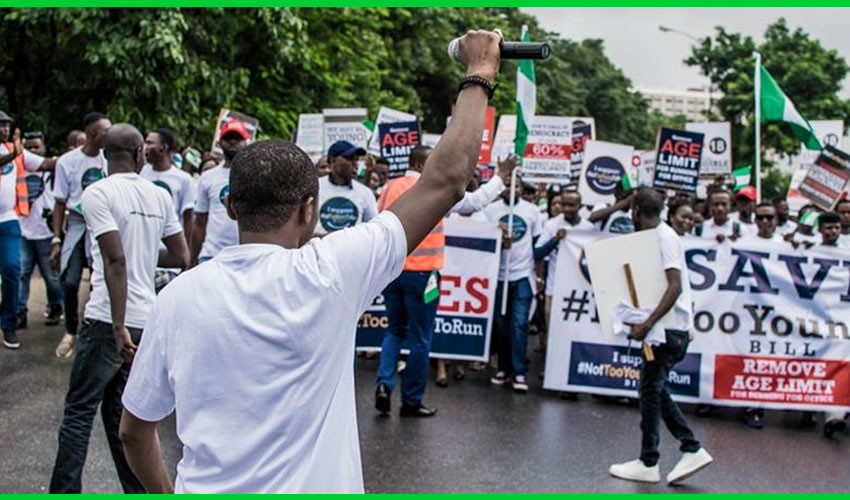 ArticleApril 16, 2019The Nigerian Youths and The Challenges Of Generation Gap; A Call To Action
ArticleApril 16, 2019The Nigerian Youths and The Challenges Of Generation Gap; A Call To Action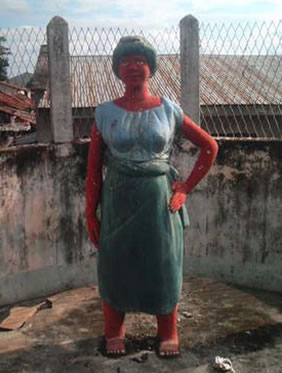 OpinionApril 16, 2019The Making of Heroes, Saints and Martyres; The Point of Departure in Deconstructing the Inikpi Legend of Igala Land
OpinionApril 16, 2019The Making of Heroes, Saints and Martyres; The Point of Departure in Deconstructing the Inikpi Legend of Igala Land
Article
Tribute to My ‘Mother’ and a Global Trailblazer: Celebrating Ms. Arunma Oteh @ 60
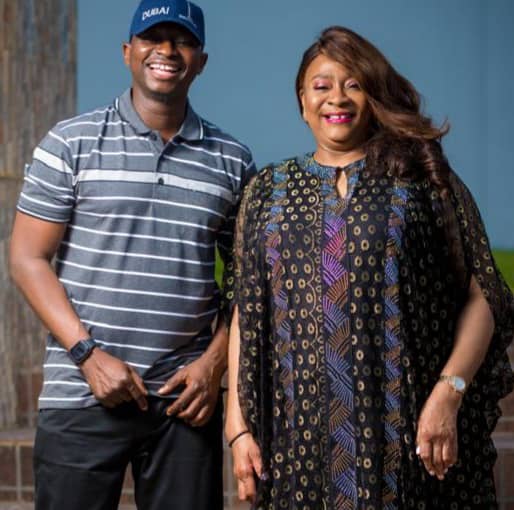
By Alhaji Ibrahim Mohammed Ajia,
As we celebrate the 60th birthday anniversary of my dearest ‘mum’ Ms. Arunma Oteh, I am overwhelmed with a sense of gratitude and admiration for a woman whose life has been a beacon of Hope, Excellence, Resilience and Integrity .
adsbygoogle || []).push({});
Ms. Arunma Oteh’s life is a testament to what can be achieved through hard work, vision, and resilience.
Born in Kano Nigeria, her academic journey began with a first-class honours degree in Computer Science from the University of Nigeria, Nsukka. She then scaled the heights of education, earning an MBA from the prestigious Harvard Business School. These were the stepping stones to a career that would leave indelible marks on Nigeria, Africa, and the world.
Her illustrious career spans decades of service at institutions like the African Development Bank (AfDB), the World Bank, and FSD Africa. At AfDB, she rose through the ranks, assuming pivotal roles, including that of Treasurer and Vice President for Corporate Management. Her expertise and leadership turned challenges into opportunities, paving the way for sustainable financial growth across the continent.
In 2009, Ms. Oteh was entrusted with the monumental task of leading the Securities and Exchange Commission (SEC) as its Director-General. It was a turbulent time for Nigeria’s capital market, but she embraced the challenge with unmatched determination. Her reforms eradicated entrenched abuses, restored investor confidence, and laid a solid foundation for sustainable growth.
Her leadership was not without resistance, as she confronted powerful interests that sought to undermine progress. Yet, with resolute commitment, focus, integrity, and the support of reform-minded leaders, she navigated these challenges, leaving behind a reformed and revitalized capital market.
Ms. Oteh’s appointment as Vice President and Treasurer of the World Bank in 2015 underscored her global stature. Managing a $200 billion debt portfolio and advising Sovereign Wealth Funds, Central Banks, and Pension Funds, she exemplified financial expertise at the highest level. Beyond her technical brilliance, she championed inclusive economic policies that benefited emerging markets and underserved populations.
Her legacy at the World Bank extends beyond numbers; it is a story of transformational leadership and unwavering commitment to empowering others.
While her professional accolades are monumental, what sets Ms. Oteh apart is her personal touch. To me and many others, she has been a mother—providing guidance, encouragement, and unwavering support. Her mentorship has been a compass in my life, teaching me the values of integrity, hard work, and service.
Her ability to nurture talent and inspire excellence is unparalleled. Through her mentorship, she has raised a generation of leaders who are now making meaningful contributions in Nigeria, Africa, and beyond.
Ms. Oteh’s story resonates with people from all walks of life. She embodies the principle that our background does not define our future, but our choices do. Her life is a beacon of hope for those striving to overcome challenges and achieve greatness.
As an Officer of the Order of the Niger (OON), a recipient of the “Distinction In Public Service” award, and one of Forbes’ “Africa’s 50 Most Powerful Women,” Ms. Oteh is celebrated not only for her achievements but also for the values she represents—integrity, resilience, and Excellence in service . Now a leading best seller on Amazon for her new book ‘All hand on deck’
On this special occasion of her 60th birthday, I celebrate Ms. Arunma Oteh for her unquantifiable contributions to Nigeria, Africa, and the global world. I honour her for the lives she has touched, the systems she has transformed, and the legacy she continues to build.
Ms. Oteh, your life is an inspiration, your achievements are a testament to excellence, and your mentorship is a gift to us all. As you celebrate this milestone, I pray for continued blessings, good health, and strength to keep shining your light on the world.
With deepest gratitude and love
Ajia, is the President/CEO, Funab Group of Companies Ltd, a Security expert and a Politician
Author Profile
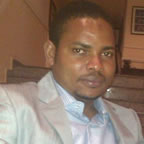
- Prince Abdulrahman Obaje is a Media, Information and Computer Technology Consultant. A quintessential Journalist, online marketer, social media strategist, Mathematician and Computer Scientist is based in Abuja, Nigeria. He is the Founder and the Publisher of The Informavores!. You can reach me on +234 805 939 5252 or send i-witness report directly to me on news@informavores.com.ng.
Latest entries
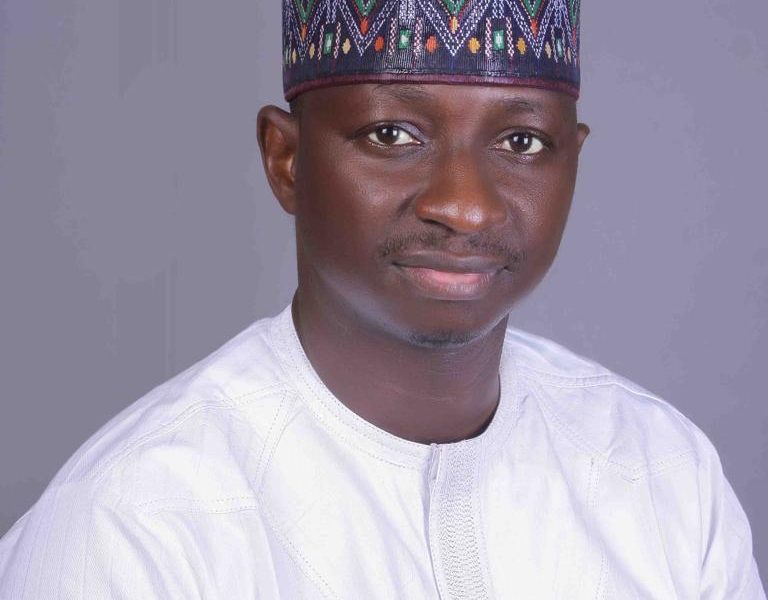 EventApril 20, 2025Easter: Ajia Felicitates Christians, Calls for Prayers, Unity and National Rebirth
EventApril 20, 2025Easter: Ajia Felicitates Christians, Calls for Prayers, Unity and National Rebirth NewsApril 7, 2025What NLM National Leader, ThisDaysMoses Tells Followers On Birthday Anniversary, Full Text
NewsApril 7, 2025What NLM National Leader, ThisDaysMoses Tells Followers On Birthday Anniversary, Full Text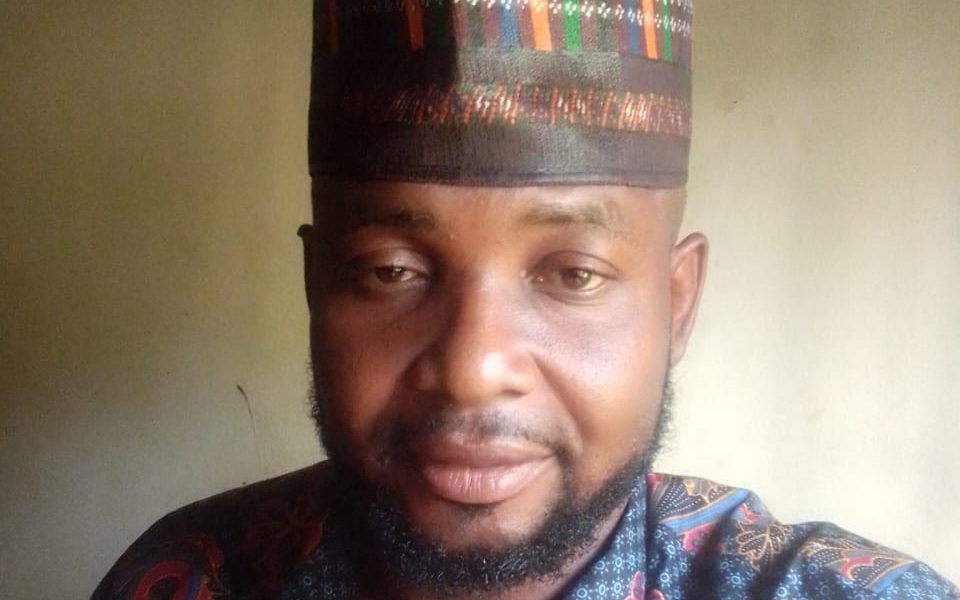 ReligiousMarch 30, 2025ICDA Chaiman, Ahmed Usman Felicitates with Igalas On the Occasion of Ide-l- Fitri
ReligiousMarch 30, 2025ICDA Chaiman, Ahmed Usman Felicitates with Igalas On the Occasion of Ide-l- Fitri NewsMarch 28, 2025Upscaling Organic, Agroecology practices key to healthy living – Experts
NewsMarch 28, 2025Upscaling Organic, Agroecology practices key to healthy living – Experts
Article
Odinkalu’s Call for GTBank Boycott: A Fight for Press Freedom and Accountability in Nigeria
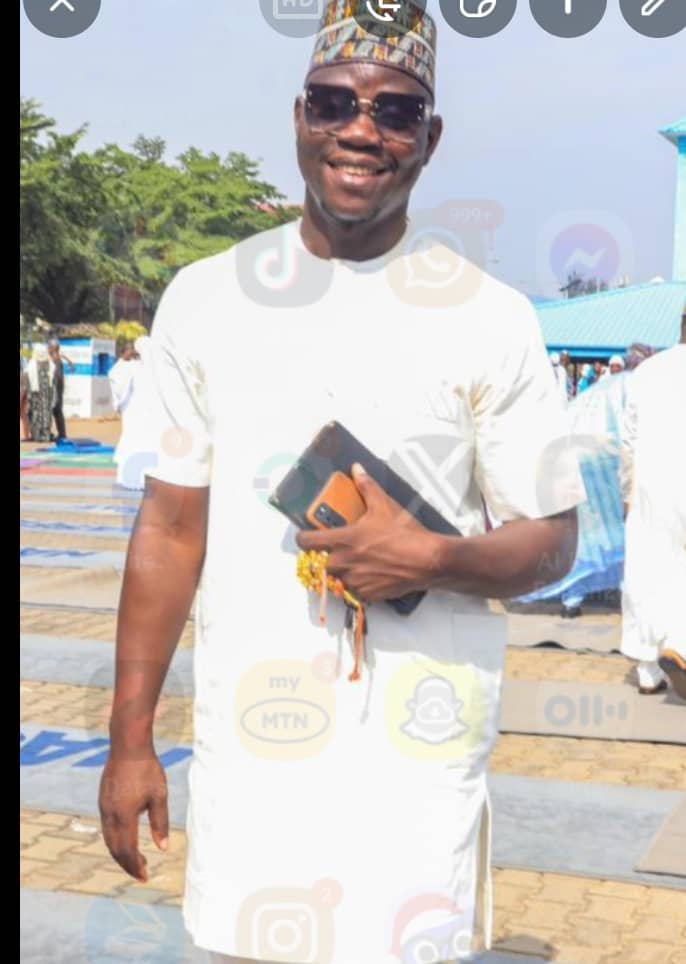
By Abdulrahman Aliagan, Abuja
By suppressing press freedom and allegedly using state apparatus to detain journalists, Guaranty Trust Holding Company (GTCO), led by its Managing Director and CEO, Segun Agbaje, finds itself at the center of a growing controversy.
adsbygoogle || []).push({});
com/pagead/js/adsbygoogle.js">
Odinkalu’s condemnation stems from the three-month detention of bloggers Precious Eze, Olawale Olurotimi, Rowland Olonishuwa and Seun Odunlami reportedly orchestrated by GTCO following unfavorable reports about the company. The case highlights a dangerous trend in Nigeria: the gagging of journalists and the erosion of press freedom, fundamental pillars of any democratic society.
GTCO is embroiled in allegations of unethical financial practices, including declaring questionable profits of over N1 trillion, evading tax payments, and managing unauthorized accounts. Instead of addressing these accusations, GTCO allegedly retaliated by targeting journalists who dared to report on the company’s activities. Bloggers like Precious Eze, Olawale Rotimi, Rowland Olonishuwa, and Seun Odunlami were detained on charges of cyberstalking—a broad and often abused provision under Nigeria’s Cybercrime Act.
According to Odinkalu, the bloggers’ detention is a calculated move to create a chilling effect on the media and deter critical reporting on corporate malpractice. “GTBank has procured the police to detain these bloggers since September 2024 on flimsy charges of cyberbullying and conspiracy,” he tweeted. “This is a blatant abuse of power and an attack on press freedom.”
Odinkalu criticized GTCO’s deployment of a high-powered legal team, including three Senior Advocates of Nigeria (SANs), to pursue its case against the bloggers. “On October 23, GTBank showcased a team of 10 lawyers whom it has retained to oppress these poor journalists,” he noted, describing the legal strategy as disproportionate and oppressive.
He further revealed that the police investigation into the case lacked substantive evidence, with the investigating team recommending the bloggers be used as “scapegoats.” Such actions underscore the imbalance of power between wealthy corporations and individual journalists or bloggers, who often lack the resources to defend themselves.
Odinkalu’s call for a boycott of GTBank resonates beyond the immediate case of detained bloggers. It highlights broader issues of accountability, transparency, and press freedom in Nigeria. GTCO’s alleged financial misconduct—including accusations of tax evasion and questionable account practices—remains unaddressed by regulatory authorities like the Central Bank of Nigeria (CBN) and the Economic and Financial Crimes Commission (EFCC).
“This lack of accountability emboldens corporations like GTCO to suppress dissent and intimidate whistleblowers,” Odinkalu remarked. “If GTBank fails to stop this assault on press freedom, citizens should stop banking with it.”
The detention of journalists reflects a troubling trend in Nigeria, where press freedom is increasingly under attack. Journalists face harassment, intimidation, and imprisonment for exposing wrongdoing, creating a hostile environment for investigative reporting.
By targeting journalists, GTCO is not only silencing dissent but also undermining democracy. A free press is essential for holding corporations and governments accountable. Without it, corruption and abuse of power flourish unchecked.
Odinkalu’s call to action has sparked conversations about the role of civil society in defending press freedom. Advocacy groups like the Global Integrity Crusade Network (GICN) have already initiated legal proceedings to compel regulatory bodies to investigate GTCO’s alleged misconduct. However, more collective action is needed to protect journalists and ensure accountability.
The GTCO case exposes critical gaps in Nigeria’s regulatory and legal frameworks. The misuse of cybercrime laws to target journalists underscores the need for legislative reforms that protect press freedom and prevent corporations from exploiting vague legal provisions.
Odinkalu’s call for a boycott is a powerful reminder that citizens have a role to play in demanding accountability. By withdrawing their patronage from institutions that undermine democracy, Nigerians can send a clear message: the suppression of press freedom will not be tolerated.
The ongoing detention of journalists by GTCO is a litmus test for Nigeria’s commitment to democracy and justice. It raises urgent questions about the balance of power between corporations and the press and highlights the need for systemic reforms to safeguard press freedom.
As Odinkalu noted, “GTBank forgets that we are also customers.” The boycott call is not just about GTCO; it is a clarion call for all Nigerians to stand against corporate impunity and defend the principles of transparency, accountability, and freedom of expression that underpin a democratic society.
Aliagan is the Managing Editor of Time Nigeria Magazine, President of the Nigerian Guild of Investigative Journalists (NGIJ) and Public Analyst based in Abuja
Author Profile

- Prince Abdulrahman Obaje is a Media, Information and Computer Technology Consultant. A quintessential Journalist, online marketer, social media strategist, Mathematician and Computer Scientist is based in Abuja, Nigeria. He is the Founder and the Publisher of The Informavores!. You can reach me on +234 805 939 5252 or send i-witness report directly to me on news@informavores.com.ng.
Latest entries
 EventApril 20, 2025Easter: Ajia Felicitates Christians, Calls for Prayers, Unity and National Rebirth
EventApril 20, 2025Easter: Ajia Felicitates Christians, Calls for Prayers, Unity and National Rebirth NewsApril 7, 2025What NLM National Leader, ThisDaysMoses Tells Followers On Birthday Anniversary, Full Text
NewsApril 7, 2025What NLM National Leader, ThisDaysMoses Tells Followers On Birthday Anniversary, Full Text ReligiousMarch 30, 2025ICDA Chaiman, Ahmed Usman Felicitates with Igalas On the Occasion of Ide-l- Fitri
ReligiousMarch 30, 2025ICDA Chaiman, Ahmed Usman Felicitates with Igalas On the Occasion of Ide-l- Fitri NewsMarch 28, 2025Upscaling Organic, Agroecology practices key to healthy living – Experts
NewsMarch 28, 2025Upscaling Organic, Agroecology practices key to healthy living – Experts
Article
In the matter of GTBank’s persecution of poor bloggers
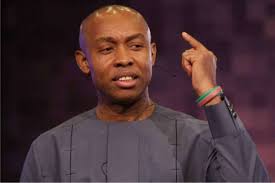
By Chidi Anselm Odinkalu
By the time Muhammadu Buhari ran for a second presidential term in 2019, it seemed clear that the judicial process in many parts of the country had been actively co-opted in the intimidation of civic opponents of the government, both real and imagined.
adsbygoogle || []).push({});
googlesyndication.com/pagead/js/adsbygoogle.js">
Steven was a compelling activist and amplifier of the crisis of human security in Southern Kaduna under former governor, Nasir el-Rufai. For this, el-Rufai arranged the abduction of Steven from his residence in Rivers State on 8 May 2019. From there they bundled him into interminable detention in Kaduna on the imagined crime of criminally defaming Cafra Caino, an acolyte of the governor who was also Chair of the Kajuru Local Government Council.
For this invented crime, el-Rufai had Steven charged before a Magistrate in Kaduna who refused him bail even when the crime was clearly a misdemeanor. Steven renewed his application for bail before the Federal High Court in Kaduna where the presiding judge, Peter Mallong, incredulously ruled that his suit was “an abuse of court process” because the Magistrate had previously refused bail. Turning judicial precedent on its head, Peter Mallong held that the decision of the Magistrate was binding on the Federal High Court.
Gloria Ballason, who argued Steven’s case, was also my lawyer when el-Rufai sought to also abduct me in circumstances that would have been not dis-similar to what he did to Steven. On the eve of the presidential election in 2019, el-Rufai went public with claims of a massacre of scores of Fulanis in Kajuru, a community against whom he appeared to have an implacable beef. The following morning, I publicly rebutted his claims. The security services were pointedly unable to support his claim.
After the 2019 elections, el-Rufai instructed my prosecution before the Magistrates Court in Kaduna on fanciful charges of incitement and injurious falsehood. The case did not even have a charge number. The magistrate called up the case on two successive occasions and, when I did not show up, decided the time was ripe to issue a warrant for my abduction. Contrary to my entitlements under the Nigerian constitution, even bothered to bring the charges to my attention. It seemed as if the entire objective from the beginning was to set me up for abduction.
Informed off-record about the case by sympathetic law enforcement agents subsequently, Gloria Ballason first issued filings objecting to how the court had chosen to proceed. Thereafter, she instituted proceedings before Peter Mallong’s Federal High Court in Kaduna against el-Rufai and the police arising out of these facts alleging breach of my constitutional rights.
One year after the case was instituted, in October 2020, Peter Mallong issued his decision. He claimed that the affidavit in support of my court processes sworn to by a litigation clerk in the law firm of my lawyers, was incompetent because the deponent was someone other than me. It was as if he had never heard of the Fundamental Rights (Enforcement Procedure) Rules which allowed for what the litigation clerk did. As a result, Peter Mallong said, my case was incompetent and his court lacked jurisdiction over it. After holding that he lacked jurisdiction, however, Peter Mallong went on to “dismiss” my case.
The judgment was manifestly crooked on the face of the record. A judge can only dismiss a case that they have had the opportunity to consider but a judge cannot consider a case over which s/he lacks jurisdiction. So, a judge who rules that he or she lacks jurisdiction cannot thereafter decide to dismiss the same case. That is exactly what Peter Mallong did. Having accomplished such crookedness, he then went on to award punitive costs against me.
It was this kind of casuistic and crooked jurisprudence that emboldened el-Rufai and his ilk to routinise the persecution of Nigerian citizens by abduction under cover of law. I was lucky. Steven Kefas was not. Gloria Ballason’s tenacity and an international campaign eventually enabled to Steven to make bail after 162 days in pre-trial detention in Kaduna prison.
According to Steven, while he suffered prolonged pre-trial detention for an imaginary crime framed against him for being a government critic, he witnessed kidnappers caught in the act being released without charges. Steven’s explanation is that: “What the oppressive elites do in Nigeria is that they will hire rogue lawyers to help them draft all manner of petitions to get critics and ‘enemies of the government’ abducted and locked up….”
This appears to be the perfect description for what is happening in an ongoing case involving the prosecution of Precious Eze, Olawale Olurotimi, Rowland Olonishuwa and Seun Odunlami before the Federal High Court in Lagos. The accused are all bloggers who run different platforms as citizen journalists or aggregators.
On 19 September, 2024, Country Hill, a law firm acting on behalf of Guarantee Trust Holding Company (GTCO) and its CEO, Segun Agbaje, wrote a petition in which they complained against the accused for what they called “acts of cyberbullying, criminal extortions (sic) and conducts (sic) likely to cause a breach of public peace” arising reportedly from material published on their blogs about Guarantee Trust Bank (GTBank). Importantly, the complaint omitted any mention of the sums that any of the suspects allegedly extorted or sought to. Subsequent investigation by the police showed clearly that upon the material being brought to their attention by intermediaries, the suspects had voluntarily pulled down the publications complained of.
Acting on this petition, nevertheless, the police promptly arrested and detained Precious Eze and Olawale Olurotimi, both of whom have been held in pre-trial custody since then. By the date you read this, each of them would have been in pre-trial custody for over 91 days. That is more than double the maximum duration of 42 days of pre-trial custody allowed by the Administration of Criminal Justice Act.
It took the police just four days to conclude investigation. Michael Abu, the Chief Superintendent of Police (CSP) who led the investigation into GTBank’s petition, wrote in his report of 23 September 2024 with reference to Precious Eze and Olawale Olurotimi that “these types of people be used as scapegoat” and recommended that they be “charged to court for the offence (sic) of conspiracy, cyberbullying, attempt to extort money through fraudulent means and conduct likely to cause the breach of peace.”
On 14 October, the police re-arraigned them. Ten days later, the amended charges filed against them included six counts of cyberbullying and two each of conspiracy and extortion. To prosecute them, GTBank secured the “fiat” of the Inspector General of Police to instruct a high-powered team of ten lawyers, including three Senior Advocates of Nigeria (SANs). This is a classic example of “oppressive elites” capturing the criminal process for destructive purposes against poor citizens.
Until now, the people who orchestrate these kinds of travesties and their judicial and legal co-travelers have enjoyed earthly impunity. Judges like Peter Mallong made this possible. The one lesson, however, of the Dele Farotimi case is that citizens now have the wherewithal to make these kinds of perversion of the legal and criminal process costly for those who orchestrate them.
In this case of Precious Eze and Olawale Olurotimi, that should be even moreso, given that the travesty is procured at the instance of a commercial and corporate actor. We are both citizens and customers. In this dual capacity we have the muscle to resist the determined conspiracy of politicians and corporates who seek to muzzle and destroy an informed and responsible civics. It is not too late for GTBank to retrace its steps.
A lawyer and a teacher, Odinkalu can be reached at chidi.odinkalu@tufts.edu
Author Profile

- Prince Abdulrahman Obaje is a Media, Information and Computer Technology Consultant. A quintessential Journalist, online marketer, social media strategist, Mathematician and Computer Scientist is based in Abuja, Nigeria. He is the Founder and the Publisher of The Informavores!. You can reach me on +234 805 939 5252 or send i-witness report directly to me on news@informavores.com.ng.
Latest entries
 EventApril 20, 2025Easter: Ajia Felicitates Christians, Calls for Prayers, Unity and National Rebirth
EventApril 20, 2025Easter: Ajia Felicitates Christians, Calls for Prayers, Unity and National Rebirth NewsApril 7, 2025What NLM National Leader, ThisDaysMoses Tells Followers On Birthday Anniversary, Full Text
NewsApril 7, 2025What NLM National Leader, ThisDaysMoses Tells Followers On Birthday Anniversary, Full Text ReligiousMarch 30, 2025ICDA Chaiman, Ahmed Usman Felicitates with Igalas On the Occasion of Ide-l- Fitri
ReligiousMarch 30, 2025ICDA Chaiman, Ahmed Usman Felicitates with Igalas On the Occasion of Ide-l- Fitri NewsMarch 28, 2025Upscaling Organic, Agroecology practices key to healthy living – Experts
NewsMarch 28, 2025Upscaling Organic, Agroecology practices key to healthy living – Experts


 Arabic
Arabic Chinese (Simplified)
Chinese (Simplified) Dutch
Dutch English
English Filipino
Filipino French
French German
German Hausa
Hausa Igbo
Igbo Italian
Italian Latin
Latin Portuguese
Portuguese Russian
Russian Spanish
Spanish Swedish
Swedish Turkish
Turkish Yoruba
Yoruba Zulu
Zulu